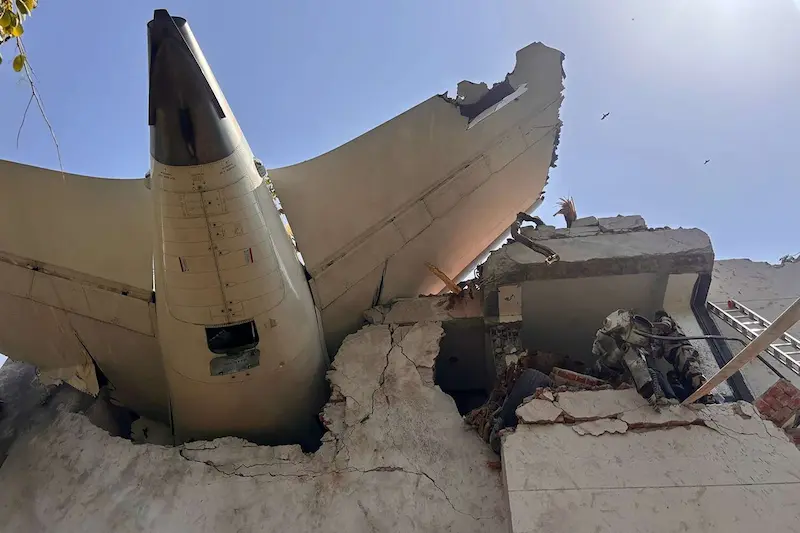
The AAIB's preliminary findings reveal shocking details in the Air India crash near Ahmedabad, as both engine fuel switches were reportedly cut off seconds after takeoff
Unthinkable Error: AAIB’s Preliminary Verdict Unveils Harrowing Details
The aviation community is reeling after the Aircraft Accident Investigation Bureau (AAIB) unveiled its initial findings into the fatal Air India crash near Ahmedabad. The report states both engine fuel switches were “manually turned off” seconds after takeoff, a move that contradicts standard operating procedures and undermines the very essence of in-flight safety protocols.
Eyewitness accounts and flight radar data suggest the aircraft rapidly lost altitude before plummeting into an open field, killing all crew members aboard. The tragedy has sparked renewed debates over pilot training, system oversight, and Air India’s operational standards.
Meanwhile, Civil Aviation Minister Ram Mohan Naidu has stepped in with a measured approach, urging stakeholders and media to “refrain from drawing premature conclusions” until the full analysis is released. The government has pledged complete transparency, but aviation experts are already calling the report “disturbing” and “indicative of deeper systemic vulnerabilities.”
A Troubled Flight Path: What Went Wrong in Those Critical Seconds?
According to AAIB’s preliminary analysis, the aircraft took off normally before experiencing a sudden power loss. Data points confirm both engines shut down almost simultaneously, an anomaly that raised red flags among investigators. The root of the issue appears to be linked to the engine fuel control switches, which were found in the “OFF” position during wreckage examination.
Industry veterans cite possible pilot error, but alternate theories range from equipment malfunction to a miscommunication between cockpit crew. Former DGCA officials noted that while deliberate engine shutdowns may occur during test flights or emergencies, the nature and timing of this incident suggest a deviation from protocol.
This has reignited scrutiny of India’s pilot certification standards and emergency response preparedness. The last major crash of this scale in India occurred in 2020 when an Air India Express aircraft overshot a runway in Kozhikode. Despite post-crash safety recommendations, gaps clearly remain.
Reform or Reckoning: Is Indian Aviation at a Crossroads?
The Air India crash has cast a spotlight on India’s aviation ecosystem, which has seen significant growth but continues to grapple with safety concerns. While the AAIB and DGCA work toward deeper inspection, civil society and aviation forums demand structural reforms. Suggestions include:
- Revamping Pilot Simulation Programs to include high-pressure scenarios.
- Mandatory Crew Mental Health Assessments pre-flight, especially on high-risk routes.
- Real-time System Redundancy Checks on fuel management systems.
- Independent Oversight Panels for accident reviews.
For Air India, the crash marks another tragic chapter in its transition story post-privatization. As it races to modernize its fleet and regain public trust, this investigation may force a renewed commitment to safety as the cornerstone of progress.
Until then, the grieving families, aviation workers, and policy makers await the AAIB’s final report, a document that could not only reshape procedural norms but redefine accountability at 30,000 feet.
Ahmedabad Plane Crash: DNA Profiling Becomes Key to Identifying Victims Amid Tragedy